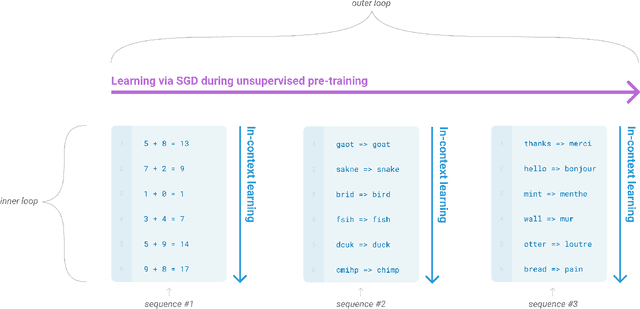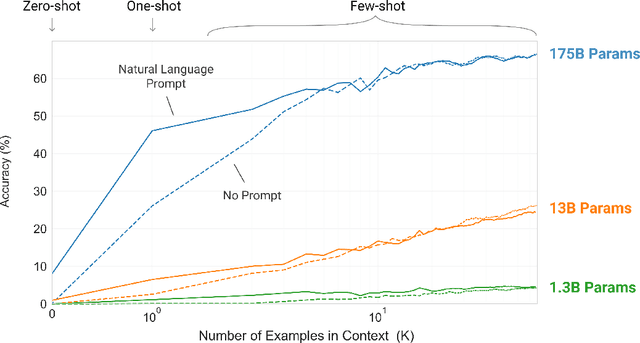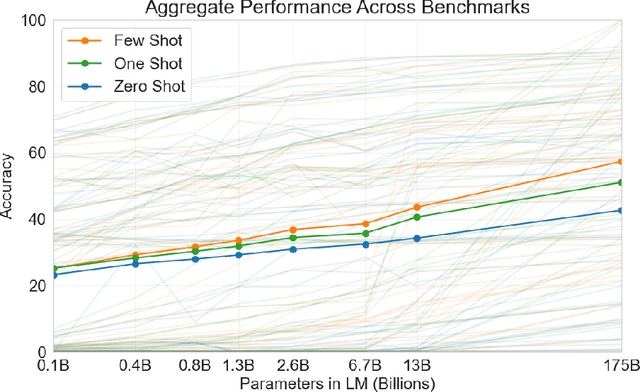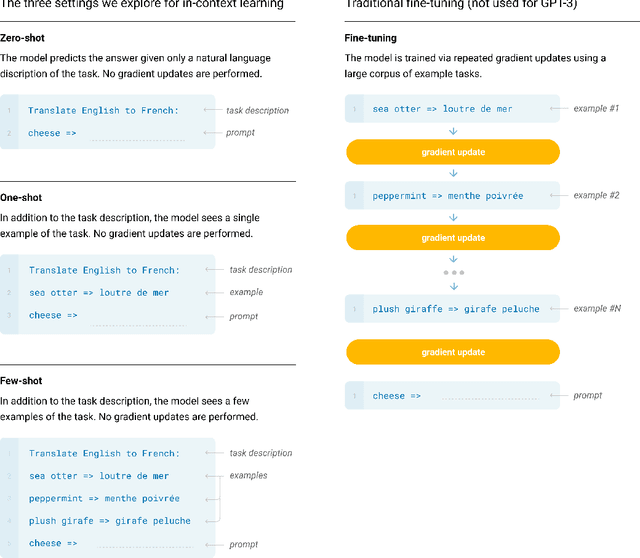Melanie Subbiah
Is the Top Still Spinning? Evaluating Subjectivity in Narrative Understanding
Apr 01, 2025Abstract:Determining faithfulness of a claim to a source document is an important problem across many domains. This task is generally treated as a binary judgment of whether the claim is supported or unsupported in relation to the source. In many cases, though, whether a claim is supported can be ambiguous. For instance, it may depend on making inferences from given evidence, and different people can reasonably interpret the claim as either supported or unsupported based on their agreement with those inferences. Forcing binary labels upon such claims lowers the reliability of evaluation. In this work, we reframe the task to manage the subjectivity involved with factuality judgments of ambiguous claims. We introduce LLM-generated edits of summaries as a method of providing a nuanced evaluation of claims: how much does a summary need to be edited to be unambiguous? Whether a claim gets rewritten and how much it changes can be used as an automatic evaluation metric, the Ambiguity Rewrite Metric (ARM), with a much richer feedback signal than a binary judgment of faithfulness. We focus on the area of narrative summarization as it is particularly rife with ambiguity and subjective interpretation. We show that ARM produces a 21% absolute improvement in annotator agreement on claim faithfulness, indicating that subjectivity is reduced.
STORYSUMM: Evaluating Faithfulness in Story Summarization
Jul 09, 2024Abstract:Human evaluation has been the gold standard for checking faithfulness in abstractive summarization. However, with a challenging source domain like narrative, multiple annotators can agree a summary is faithful, while missing details that are obvious errors only once pointed out. We therefore introduce a new dataset, STORYSUMM, comprising LLM summaries of short stories with localized faithfulness labels and error explanations. This benchmark is for evaluation methods, testing whether a given method can detect challenging inconsistencies. Using this dataset, we first show that any one human annotation protocol is likely to miss inconsistencies, and we advocate for pursuing a range of methods when establishing ground truth for a summarization dataset. We finally test recent automatic metrics and find that none of them achieve more than 70% balanced accuracy on this task, demonstrating that it is a challenging benchmark for future work in faithfulness evaluation.
Reading Subtext: Evaluating Large Language Models on Short Story Summarization with Writers
Mar 02, 2024Abstract:We evaluate recent Large language Models (LLMs) on the challenging task of summarizing short stories, which can be lengthy, and include nuanced subtext or scrambled timelines. Importantly, we work directly with authors to ensure that the stories have not been shared online (and therefore are unseen by the models), and to obtain informed evaluations of summary quality using judgments from the authors themselves. Through quantitative and qualitative analysis grounded in narrative theory, we compare GPT-4, Claude-2.1, and LLama-2-70B. We find that all three models make faithfulness mistakes in over 50% of summaries and struggle to interpret difficult subtext. However, at their best, the models can provide thoughtful thematic analysis of stories. We additionally demonstrate that LLM judgments of summary quality do not match the feedback from the writers.
Check-COVID: Fact-Checking COVID-19 News Claims with Scientific Evidence
May 29, 2023



Abstract:We present a new fact-checking benchmark, Check-COVID, that requires systems to verify claims about COVID-19 from news using evidence from scientific articles. This approach to fact-checking is particularly challenging as it requires checking internet text written in everyday language against evidence from journal articles written in formal academic language. Check-COVID contains 1, 504 expert-annotated news claims about the coronavirus paired with sentence-level evidence from scientific journal articles and veracity labels. It includes both extracted (journalist-written) and composed (annotator-written) claims. Experiments using both a fact-checking specific system and GPT-3.5, which respectively achieve F1 scores of 76.99 and 69.90 on this task, reveal the difficulty of automatically fact-checking both claim types and the importance of in-domain data for good performance. Our data and models are released publicly at https://github.com/posuer/Check-COVID.
Unsupervised Selective Rationalization with Noise Injection
May 27, 2023Abstract:A major issue with using deep learning models in sensitive applications is that they provide no explanation for their output. To address this problem, unsupervised selective rationalization produces rationales alongside predictions by chaining two jointly-trained components, a rationale generator and a predictor. Although this architecture guarantees that the prediction relies solely on the rationale, it does not ensure that the rationale contains a plausible explanation for the prediction. We introduce a novel training technique that effectively limits generation of implausible rationales by injecting noise between the generator and the predictor. Furthermore, we propose a new benchmark for evaluating unsupervised selective rationalization models using movie reviews from existing datasets. We achieve sizeable improvements in rationale plausibility and task accuracy over the state-of-the-art across a variety of tasks, including our new benchmark, while maintaining or improving model faithfulness.
Detecting Harmful Agendas in News Articles
Jan 31, 2023Abstract:Manipulated news online is a growing problem which necessitates the use of automated systems to curtail its spread. We argue that while misinformation and disinformation detection have been studied, there has been a lack of investment in the important open challenge of detecting harmful agendas in news articles; identifying harmful agendas is critical to flag news campaigns with the greatest potential for real world harm. Moreover, due to real concerns around censorship, harmful agenda detectors must be interpretable to be effective. In this work, we propose this new task and release a dataset, NewsAgendas, of annotated news articles for agenda identification. We show how interpretable systems can be effective on this task and demonstrate that they can perform comparably to black-box models.
SafeText: A Benchmark for Exploring Physical Safety in Language Models
Oct 18, 2022



Abstract:Understanding what constitutes safe text is an important issue in natural language processing and can often prevent the deployment of models deemed harmful and unsafe. One such type of safety that has been scarcely studied is commonsense physical safety, i.e. text that is not explicitly violent and requires additional commonsense knowledge to comprehend that it leads to physical harm. We create the first benchmark dataset, SafeText, comprising real-life scenarios with paired safe and physically unsafe pieces of advice. We utilize SafeText to empirically study commonsense physical safety across various models designed for text generation and commonsense reasoning tasks. We find that state-of-the-art large language models are susceptible to the generation of unsafe text and have difficulty rejecting unsafe advice. As a result, we argue for further studies of safety and the assessment of commonsense physical safety in models before release.
Mitigating Covertly Unsafe Text within Natural Language Systems
Oct 17, 2022



Abstract:An increasingly prevalent problem for intelligent technologies is text safety, as uncontrolled systems may generate recommendations to their users that lead to injury or life-threatening consequences. However, the degree of explicitness of a generated statement that can cause physical harm varies. In this paper, we distinguish types of text that can lead to physical harm and establish one particularly underexplored category: covertly unsafe text. Then, we further break down this category with respect to the system's information and discuss solutions to mitigate the generation of text in each of these subcategories. Ultimately, our work defines the problem of covertly unsafe language that causes physical harm and argues that this subtle yet dangerous issue needs to be prioritized by stakeholders and regulators. We highlight mitigation strategies to inspire future researchers to tackle this challenging problem and help improve safety within smart systems.
Language Models are Few-Shot Learners
Jun 05, 2020



Abstract:Recent work has demonstrated substantial gains on many NLP tasks and benchmarks by pre-training on a large corpus of text followed by fine-tuning on a specific task. While typically task-agnostic in architecture, this method still requires task-specific fine-tuning datasets of thousands or tens of thousands of examples. By contrast, humans can generally perform a new language task from only a few examples or from simple instructions - something which current NLP systems still largely struggle to do. Here we show that scaling up language models greatly improves task-agnostic, few-shot performance, sometimes even reaching competitiveness with prior state-of-the-art fine-tuning approaches. Specifically, we train GPT-3, an autoregressive language model with 175 billion parameters, 10x more than any previous non-sparse language model, and test its performance in the few-shot setting. For all tasks, GPT-3 is applied without any gradient updates or fine-tuning, with tasks and few-shot demonstrations specified purely via text interaction with the model. GPT-3 achieves strong performance on many NLP datasets, including translation, question-answering, and cloze tasks, as well as several tasks that require on-the-fly reasoning or domain adaptation, such as unscrambling words, using a novel word in a sentence, or performing 3-digit arithmetic. At the same time, we also identify some datasets where GPT-3's few-shot learning still struggles, as well as some datasets where GPT-3 faces methodological issues related to training on large web corpora. Finally, we find that GPT-3 can generate samples of news articles which human evaluators have difficulty distinguishing from articles written by humans. We discuss broader societal impacts of this finding and of GPT-3 in general.
 Add to Chrome
Add to Chrome Add to Firefox
Add to Firefox Add to Edge
Add to Edge